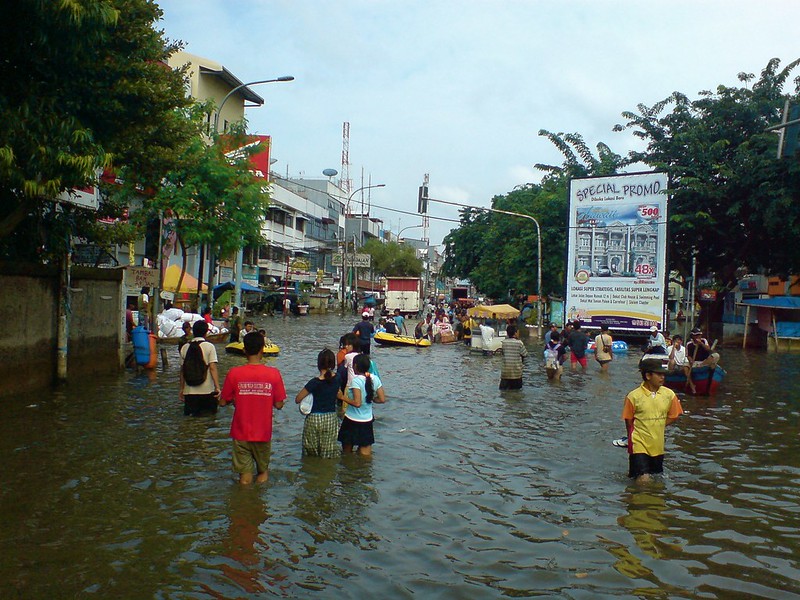How chatbots and AI are helping Indonesia with disaster preparedness
Indonesia experiences a multitude of natural hazards. Communities are turning to technology to stay ahead and informed of crises and enable better preparedness.
A s Indonesia braces for monsoon floods, a local website said on Wednesday that it will help emergency workers and residents, already battling the new coronavirus, better respond to crises.
PetaBencana.id, which means “disaster map”, uses artificial intelligence (AI) and internet bots to monitor and respond to social media posts by crisis-hit communities, using them to map events like floods, fires and earthquakes in real-time.
Parts of Southeast Asia have been hit by heavy rainfall, and more is predicted during the monsoon season up until March, with the onset of a La Nina weather system, characterised by unusually cold temperatures in the equatorial Pacific Ocean.
“For Indonesia, they’re expecting a 40% increase in rainfall,” said Nashin Mahtani, director of PetaBencana.id, which was founded in 2013 and covered five cities before it went nationwide in February.
“We emphasise the need of real-time information because you cannot predict how the flood is going to happen.”
PetaBencana.id monitors words linked to disasters that are posted on Twitter and its AI-assisted “humanitarian chatbots” use Twitter, Facebook and Telegram messaging service to engage with residents about disasters they have flagged up.
“When residents share information about their needs, the emergency agencies are better able to allocate their resources,” Mahtani told the Thomson Reuters Foundation.

Indonesia is particularly vulnerable to climate change and the increase in natural disasters. Photo by Charles Wiriawan on Flickr.
Indonesian President Joko Widodo this month urged ministers to prepare for the potentially hazardous impact of La Nina.
A typhoon and a storm have brought floods to neighbouring Vietnam and the Philippines this month, forcing thousands to be evacuated from their homes in poor regions already suffering hardships due to the COVID-19 pandemic.
Indonesia, an archipelago of thousands of islands with a population of 270 million people, has about 81,000 km (50,300 miles) of coastline, making it particularly vulnerable to climate change.
It has also struggled to stem the coronavirus, with about 400,000 cases and almost 14,000 deaths, the highest figures in the region.
“Even in areas where people are used to flood events, this time the response is going to be very different because we’re going to have to incorporate certain health protocols,” said Mahtani, highlighting social distancing rules.
“As emergency plans adapt, we anticipate that they’ll be changing to the situation as needed – which requires an even greater degree of flexibility and coordination,” she said from the island of Bali.
PetaBencana.id has trained schools and community groups to prepare for disasters, including using the website to be aware of flood risks, know when to evacuate, avoid disaster-hit areas, and to help authorities monitor flood-defence infrastructure.
The ideas presented in this article aim to inspire adaptation action – they are the views of the author and do not necessarily reflect those of the Global Center on Adaptation.